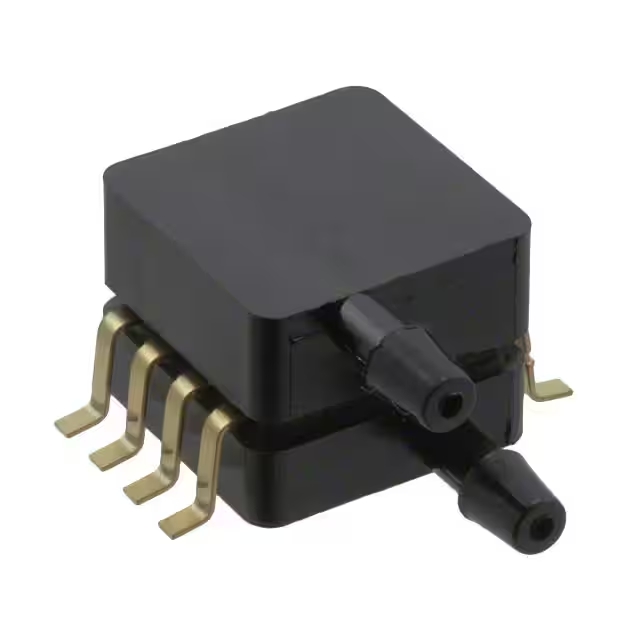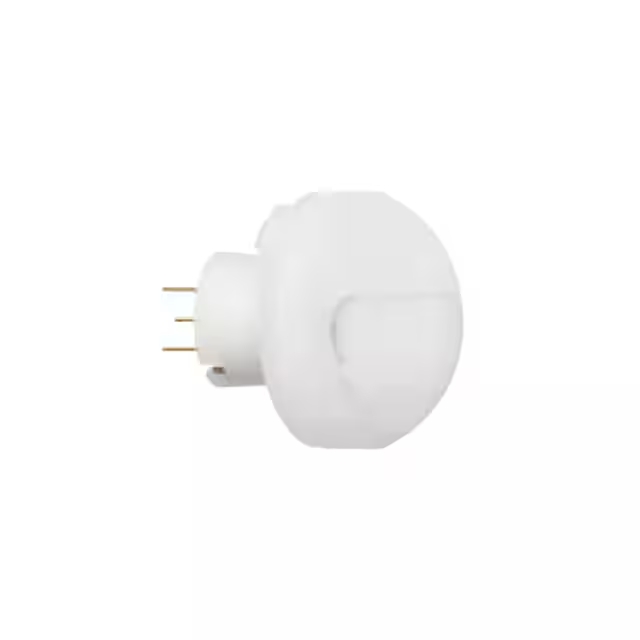MPXV7002DP Airspeed Sensor Datasheet & Arduino
- Applications: Board Mount
- Pressure Type: Differential
- Output Type: Analog Voltage
- Package: 8-BSOP (0.475, 12.06mm Width) Dual Ports, Same Side

FREE delivery for orders over HK$250.00

Quick response, quick quotaton

Flash shipment,no worries after sales

Original channel,guarantee of the authentic products
MPXV7002DP cảm biến chân không, cảm biến áp suất không khí
mpxv7002dp
If you’re working on measuring small pressure differences accurately, the MPXV7002DP sensor is an excellent choice. It easily detects pressures within ±2 kPa (around ±0.29 psi), making it perfect for applications like medical equipment, HVAC systems, or airflow monitoring—where precision really matters.
You’ll appreciate how straightforward it is to use, especially with embedded systems or microcontrollers, since it only needs a single 5V supply. The output voltage (0.5 to 4.5V) is linear with pressure changes, simplifying your data processing.
It’s reliable, too—built-in temperature compensation ensures your measurements stay accurate, even if your environment changes. Plus, the sensor responds quickly, letting you capture rapid pressure fluctuations without missing a beat. With its convenient dual-port SOIC package and tubing connections, you’ll find installation hassle-free, ideal for your next precise measurement project.
mpxv7002dp pinout and connection

| Pin Number | Pin Name | Description |
|---|---|---|
| 1 | Vout | Analog voltage output (linear relation to pressure) |
| 2 | GND | Sensor ground |
| 3 | VCC | Power input (+5V, typical) |
| 4~8 | NC | No connection, leave unconnected |
When you’re setting up your MPXV7002DP sensor, start by giving it a clean and stable 5V power supply—try to keep your voltage between 4.75V and 5.25V to get accurate readings. Connect this to pin 3 (VCC), and ensure pin 2 (GND) has a solid, noise-free connection to your system ground.
The output on pin 1 (Vout) is analog, typically ranging from about 0.5 to 4.5 volts depending on pressure differences. You’ll want to hook this up to your microcontroller’s ADC input, ideally through an RC low-pass filter to cut down noise.
Don’t worry about pins 4 to 8—they can stay disconnected.
Also, double-check your tubing connections at pressure ports (P1 and P2); leaks can really mess up your readings. Keep your wiring short, shielded, and away from noisy equipment, so your measurements stay stable and reliable.
mpxv7002dp equivalent pressure sensor
| Parameter / Model | MPXV7002DP | MPXV7002GP | MPXV7002GC6U | XGZP6899A |
|---|---|---|---|---|
| Pressure Type | Differential | Differential | Differential | Differential |
| Pressure Range | ±2 kPa | ±2 kPa | ±2 kPa | Selectable: ±0.5 to ±700 kPa |
| Output Type | Analog voltage (0.5~4.5V) | Analog voltage (0.5~4.5V) | Analog voltage (0.5~4.5V) | Analog voltage (0.5~4.5V) |
| Supply Voltage | 5V (4.75~5.25V) | 5V (4.75~5.25V) | 5V (4.75~5.25V) | 5V or 3.3V |
| Accuracy | ±5% | ±5% | ±5% | ±2.5% (customizable) |
| Package Type | 8-SOP Dual-port Side | 8-SOP Side-port | 8-SOP Top-port | 8-SOP Dual-port Same-side |
| Port Type | Barbed | Barbed | Barbless | Barbed |
| Operating Temperature | 10°C to 60°C | 10°C to 60°C | 10°C to 60°C | 0°C to 60°C |
| Manufacturer | NXP | NXP | NXP | CFSensor |
| Applicable Media | Non-corrosive gases | Non-corrosive gases | Non-corrosive gases | Non-corrosive gases or air |
When you’re thinking about swapping out the MPXV7002DP for another sensor, keep a few practical points in mind. First, even though sensors like MPXV7002GP and MPXV7002GC6U come in similar 8-SOP packages, their port placements might differ, so double-check your PCB layout before deciding.
If your project needs a broader range of pressure measurement, the XGZP6899A sensor could be your go-to option—it offers more flexibility and can handle different pressure ranges. Plus, it supports both 5V and 3.3V systems, giving you extra convenience if you’re designing for different voltage setups.
Also, accuracy matters. If you need precision, the XGZP6899A can deliver accuracy around ±2.5%, and you can even request custom specs from suppliers.
Lastly, always consider supply availability. Sometimes the MPXV7002DP stock isn’t stable, so choose a replacement from a reliable supplier to avoid frustrating delays in your project timelines.
mpxv7002dp arduino circuit example

If you’re planning to hook up an MPXV7002DP pressure sensor with your Arduino Uno, here’s a simple way to do it right. First, connect the sensor’s VCC pin (the red wire) directly to your Arduino’s 5V pin—make sure it’s stable to avoid noisy readings. Then, hook the sensor’s GND (black wire) to the Arduino’s ground pin for a solid, shared reference.
Next, connect the sensor’s VOUT pin (the blue wire) to one of Arduino’s analog inputs, like A0. The sensor outputs a voltage that changes linearly from about 0.5V to 4.5V based on the pressure difference between its two ports (P1 and P2). Your Arduino reads this voltage through its ADC input and converts it into meaningful pressure values.
Make sure your air tubes are sealed tight—leaks can cause incorrect measurements. And to keep readings stable, consider adding a filter to smooth out the signal. With this setup, you’re ready to accurately monitor pressure differences and integrate the results into your project or prototype.
mpxv7002dp pressure measurement project
If you’re looking to measure air pressure differences precisely with Arduino, the MPXV7002DP sensor is exactly what you need. Here’s a quick rundown on how to get started:
First, grab your Arduino Uno, an MPXV7002DP sensor, some jumper wires, a breadboard, and flexible tubing for pressure connections. Connect your sensor’s VCC to Arduino’s 5V pin, ground to ground, and the sensor’s output pin straight to an analog input like A0.
The sensor gives you about 2.5 volts when there’s zero pressure difference, and every additional volt indicates a change of about 1 kPa. Once everything’s wired up and powered, you can easily monitor your pressure readings via the serial monitor on your computer.
Make sure your power supply is stable, and carefully seal your tubing connections to avoid leaks—accuracy depends heavily on airtight connections. You can apply this setup to measure airflow in HVAC systems, check ventilation in medical devices like ventilators, or monitor industrial equipment like air filters and ducts.
mpxv7002dp airspeed sensor application
If you’re interested in measuring airspeed accurately—whether it’s for your drone, remote-controlled aircraft, HVAC systems, or even wind tunnel experiments—the MPXV7002DP sensor paired with a Pitot tube makes an ideal setup.
Here’s the idea: The Pitot tube captures two types of pressure—dynamic and static. Your MPXV7002DP sensor measures the difference between these two pressures. Then, your Arduino converts this measurement into a precise airspeed reading using the Bernoulli equation.
When setting it up, connect the sensor’s output to an analog pin on your Arduino, supply stable 5V power, and carefully connect the Pitot tube ports. Check the tubing carefully to avoid air leaks, because even small leaks can mess up your readings.
Once it’s running, you’ll notice nearly zero pressure difference when there’s no airflow, and clear increases as wind picks up. This reliable, easy-to-use setup helps you accurately track airspeed for precise control and better results in all your projects.
mpxv7002dp differential pressure tutorial
If you’re looking to accurately measure small pressure differences, the MPXV7002DP differential pressure sensor is exactly what you need. It’s widely used for measuring airflow, wind speed, or pressure differences in HVAC systems and medical equipment, like ventilators.
Here’s how you can easily get started with an Arduino Uno. Connect the sensor’s VCC pin to your Arduino’s 5V power, GND pin to ground, and the analog output (Vout) to the Arduino’s A0 analog input. Then, hook up flexible tubing from the sensor ports to the points you want to measure.
When there’s no pressure difference, you’ll see around 2.5 volts output, meaning zero pressure. A higher or lower voltage indicates a positive or negative pressure difference. Make sure your tubing connections are airtight—leaks can ruin your measurements. Also, keep your power supply steady and noise-free.
This setup is great for practical projects like drone airspeed measurement, HVAC airflow monitoring, or experiments in a wind tunnel.








Series.jpg)

